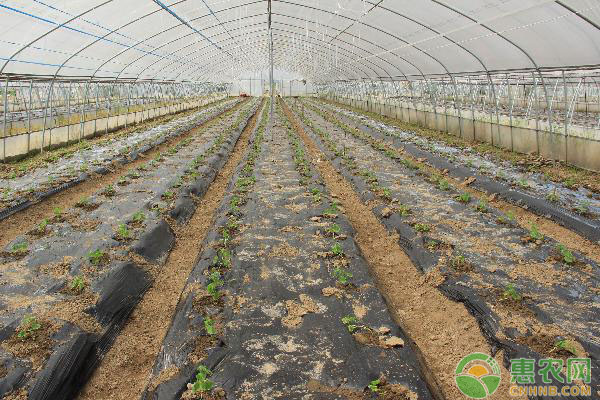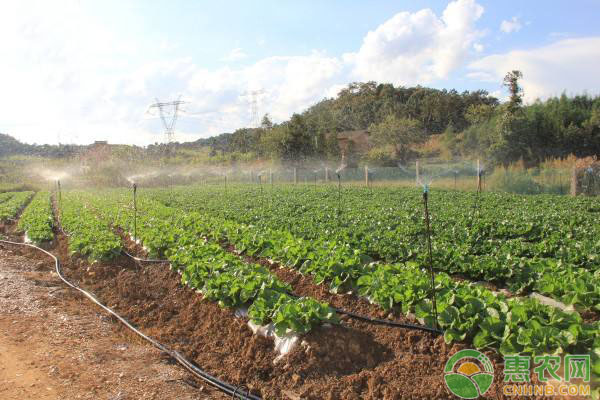When farmers are managing greenhouse cultivation, they must promote the disinfection of greenhouses and soil during the favorable period of leisure, so as to ensure the high yield of crops such as fruit trees and vegetables in greenhouses and prevent the occurrence of pests and diseases. Therefore, we must effectively grasp the following aspects of disinfection work. First, the shed disinfection The greenhouse is warm and humid. It is suitable for the reproduction of many pathogenic organisms and the wintering of pests. After more than two years of production, the types of pests and diseases increase, and it is aggravated year by year. After the plants have been completely removed, the greenhouses are disinfection. One is to use sulfur fumigation. After a few days of confined greenhouses, choose sunny days, 4g of sulfur per cubic meter, 8g of sawdust, at 7 o'clock in the evening, stack sawdust every 2m, spread a layer of sulfur powder, pour a small amount of alcohol, ignite one by one, 24h After the wind is released. This method has good disinfection effect, easy material extraction and low cost. It can also be disinfected with bactericidal agents such as chlorothalonil. It is smoked once every 7~10d for 3 consecutive times, and the effect is remarkable. The method is to clean the garden and strictly seal it to smoke. 45% chlorothalonil fumigant or 30% keeling fuming agent or chlorothalonil and scleroside mixed fuming agent can be used for the control of gray mold-based diseases. The dosage of the fumigant is 0.2~0.3g per cubic meter of space. The dosage per mu: 30% Succulent smoker 300~500g, 45% chlorothalonil fumigant 200~250g, evenly placed, respectively, ignited, then sealed smoke for 2~3h. Second, the greenhouse skeleton and auxiliary facilities disinfection For greenhouse nursery, nutrition and other seedling equipment, production tools, etc., spray or disinfect with 1%~2% formalin aqueous solution or spray disinfection, or disinfect with diclosan (concentration: 30mg/L). Third, soil disinfection Disinfection of soil is one of the important measures to control soil-borne diseases and insect pests, and has gradually become accepted by the majority of vegetable farmers. Consumers' pursuit of pollution-free agricultural products, green foods and even organic foods also puts higher demands on chemical control. Therefore, when carrying out soil disinfection in greenhouses, it is necessary to rely more on comprehensive prevention and control measures such as agricultural control, physical control, and ecological control. There are many methods for soil disinfection. At present, the following are mainly used: High temperature shack It is usually carried out from early July to late August. Double-layer covering with greenhouse film and mulch film, strictly maintaining the tightness of the greenhouse. Under such conditions, the highest ground temperature at 10cm below the surface can reach 70°C, and the ground temperature at 20cm deep can reach above 45°C. The sterilization rate can reach more than 80%. Most bacteria are not resistant to high temperatures and can be killed after more than 10 days of heat treatment. For example, some bacterial pathogens, cucumber sclerotinia, cucumber blight, eggplant verticillium, etc. are not very resistant to high temperatures; but some bacteria are particularly resistant to high temperatures, such as root rot pathogens, clubroot disease and withering Some deep-rooted soil-borne bacteria such as pathogens must be treated for 30~50d to achieve better results due to the deep soil layer. Therefore, when soil disinfection is carried out, the disinfection time should be determined according to the heat resistance of the crops and their corresponding germs in the greenhouse. High temperature shacks have the best effect on soils up to 15 cm deep, and have a poor disinfection effect on soils over 20 cm deep. Therefore, it is best not to plow the soil after disinfection, even if the ploughing is limited to a depth of 10 cm. Otherwise, the bacteria in the soil below will be turned over again and re-contamination will occur. High temperature suffocation can greatly reduce the density of bacteria in the field and greatly reduce the chance of crop disease. For greenhouses with root-knot nematodes, when using the base fertilizer after the shack, the avermectin organic fertilizer or the eucalyptus organic fertilizer 400kg per acre can basically eliminate the damage caused by the root-knot nematode. 2. Use soil disinfectant One is methyl bromide (to be phased out in 2015). Remove the remaining straw and root system before use, deep-turn the soil at least 30cm, apply the base fertilizer, break the large clods, and ensure that the temperature of the soil at 20cm deep is at least 8 °C. The higher the temperature, the stronger the fumigation effect. When handling, take a small arch shed and cover the shed film. Generally, 40 kg per mu is used, 1 can of medicine is placed every 13 m2, and a small piece of plastic cloth is placed under the medicine can. When the medicine is applied, the medicine can is stuck on the can opener, and the methyl bromide is discharged into the liquid through the covered film. Place the plastic sheet on the mat and vaporize it after a few minutes. It is necessary to be cautious when using methyl bromide. It is strictly forbidden to operate during the ventilation period. The fumigation period should be about 15d. Only when the film is ventilated for more than 30d can be planted. Since methyl bromide is effective against pathogens, weeds, nematodes, insects and mites, and the use of methyl bromide has a significant effect on cucumber and tomato production, it is currently widely used. The second is cotton lumps. Mianlong is a low-toxic soil disinfectant that is safer than calcium cyanamide and methyl bromide. Mianlong produces methyl isothiocyanate in moist soil and rapidly diffuses into the soil particles, effectively killing various nematodes, pathogens, underground pests and weed seeds in the soil, thus achieving clean soil and loosely activated soil. Effect. Usage: After applying the base fertilizer, the soil is deep-turned (about 30cm), leveling, watering and moisturizing for 3~4d, when the soil moisture is 40%~60% (the soil can be pinched into a group, and can be dispersed after 1m high). Rotary tiller with a rotary tiller. Then spread the cotton spur evenly on the surface, 20~30kg per acre, and cover it with plastic cloth immediately after application. The gas produced by the decomposition of cotton is lighter than air. To ensure that the plastic cloth is not damaged, it is not possible to use a plastic cloth that is too thin, such as a plastic film, and the four sides are compacted with soil and sealed. The sealing period is guaranteed to be more than 12d. After the end, the plastic sheet is removed. After 1 week of ventilation, the soil is taken for germination test to ensure the safety before seedling can be carried out. The third is lime nitrogen. Lime nitrogen (calcium cyanamide) is a highly effective soil disinfectant with disinfection, pest control and disease prevention. Choose summer high temperature, shed leisure period, use 1000-2000kg of wheat straw (or straw) per acre, sprinkle on the ground; then apply lime nitrogen 50~100kg on wheat straw; deep turn 20~30cm, try to turn wheat straw Basement; the height is 30cm, the width is 60~70cm; the ground is sealed with film, the cover is tight; the water is poured between the daytime, and the foot is poured; the greenhouse is completely sealed with the new shed film; under the high temperature and strong light in summer Stuffed shed 20~30d. After the shack is over, the shed film and the mulch film will be removed, and the cultivating and drying will be carried out. Lime nitrogen is decomposed in the soil to produce monocyanamide and dicyandiamide, which have a strong killing effect on nematodes and other soil-borne diseases. At the same time, the calcium oxide in the lime nitrogen releases heat in the water, which causes the wheat straw to rot and has a good fertilizer effect. High temperature in summer, heat preservation of shed film, geothermal heating, surface temperature during the day can be as high as 65~70°C, and 10cm ground temperature is up to 50°C, which can effectively kill various pests and weeds in the soil. After the disinfection treatment of the greenhouse, the harmful pathogens in the greenhouse are effectively controlled. At this time, it is necessary to prevent the re-introduction of the pathogens, and at the same time, the biological fertilizer should be added in time to increase the beneficial bacteria in the soil. In the greenhouse where biological bacterial fertilizer is used, be sure not to use the medicine when planting, so as to avoid the use of the medicine to kill the beneficial bacteria and cause unnecessary waste. The fourth is other medicines. Diseases infested by soil transmission include verticillium wilt, bacterial wilt and blight. To prevent and cure these diseases, the formalin can be poured 100-200 times along the gutters half a month before planting, and then covered with a polyethylene film and sealed for 5 days. After one week, the medicine can be colonized after all the medicines have evaporated. The soil can also be sprinkled with 50% carbendazim, 50% thiophanate, 75% dikesone 1000 times liquid, double effect spirit, and anti-dry spirit 300 times liquid. To control nematodes, insects, some grass seeds, verticillium and other fungi, spray chloropicrin into the soil with an ejector, inject 2~4m L, or every cubic meter of soil every 20~30cm, 8~15cm deep soil ( Or nutrient soil) Apply 150m L, cover with a plastic film, etc. for 3d, and dry it for a long time before use. For sheds with serious epidemics and downy mildew, 0.5kg of copper sulphate and 100~150kg of water can be used to sterilize the soil. Feed Additives Fruit Powder,Echinacea Purpurea Extract,Saccharomyces Cerevisiae Dextran,Polyphenols Echinacea Purpurea Extract Fufeng Sinuote Biotechnology Co.,Ltd. , https://www.ffsinuoteplant.com

